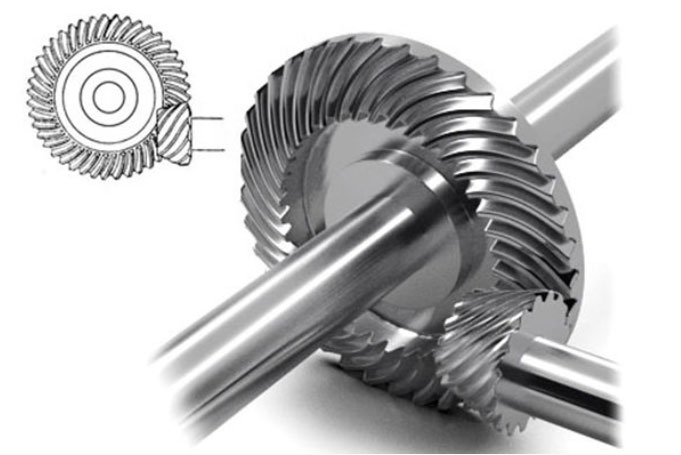Hypoid gears play a crucial role in wind turbines, contributing to the optimization of power transmission efficiency in this renewable energy technology. Wind turbines convert wind energy into electrical power through a series of mechanical components, and hypoid gears are utilized in the drivetrain to efficiently transfer rotational motion from the rotor to the electrical generator. Let’s explore how hypoid gears help optimize power transmission efficiency in wind turbines.

- High Torque Capacity: Wind turbines operate in environments with varying wind speeds, and they need to efficiently capture and convert wind energy. Hypoid gears are capable of handling high torque loads, which is essential for transferring the rotational force from the turbine blades to the generator. Their robust design and tooth geometry allow for the transmission of significant amounts of torque, ensuring efficient power transfer even in demanding wind conditions.
- Offset Shaft Alignment: The offset shaft alignment of hypoid gears in wind turbines allows for optimal positioning of the generator relative to the rotor. This alignment reduces the bending moments and misalignments that can occur in the drivetrain, minimizing power losses and enhancing overall power transmission efficiency. By optimizing the alignment, hypoid gears help reduce energy losses and improve the system’s overall performance.
- Compact Design: Hypoid gears offer a compact form factor, which is beneficial in wind turbines where space is often limited. Their offset shaft alignment allows for efficient packaging within the nacelle, enabling the gearbox to be integrated in a compact manner. This compact design facilitates the overall aerodynamic efficiency of the wind turbine, reducing drag and improving the turbine’s energy conversion efficiency.
- Gear Ratio Optimization: Hypoid gears allow for flexibility in selecting the gear ratio based on the wind turbine’s specific requirements. The gear ratio determines the speed at which the rotor rotates relative to the generator. By optimizing the gear ratio, the rotational speed can be matched to the generator’s optimal operating speed, maximizing power generation efficiency. This ensures that the wind turbine operates within its most efficient range, thereby enhancing power transmission efficiency.
- Durability and Reliability: Wind turbines are exposed to harsh environmental conditions, including high wind speeds, vibrations, and temperature variations. Hypoid gears are designed to be durable and reliable, with high-quality materials and robust construction. Their ability to withstand these challenging conditions ensures long-term performance and reliable power transmission in wind turbines, minimizing downtime and maintenance costs.
- Noise Reduction: Noise reduction is a crucial consideration in wind turbines, especially for onshore installations near residential areas. Hypoid gears are known for their relatively quiet operation due to their tooth geometry and offset shaft alignment. The reduced gear meshing noise and vibrations contribute to a quieter operation, improving the overall user experience and reducing noise pollution.
- Lubrication and Efficiency: Proper lubrication is essential for minimizing friction and optimizing power transmission efficiency in hypoid gears. The selection of high-quality lubricants and effective lubrication systems ensures smooth gear operation, reduces energy losses, and extends the gear’s lifespan. By maintaining proper lubrication, the overall efficiency of the power transmission system is improved.
In conclusion, hypoid gears in wind turbines contribute to the optimization of power transmission efficiency. Their high torque capacity, offset shaft alignment, compact design, gear ratio optimization, durability, noise reduction, and efficient lubrication all play crucial roles in ensuring the efficient conversion of wind energy into electrical power. As wind turbine technology continues to advance, the design and utilization of hypoid gears will further contribute to improved power transmission efficiency, making wind energy a more sustainable and viable source of electricity.
